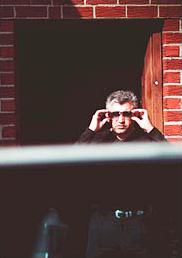Albanian mafia
Albanian Mafia refers to a number of organized crime groups originating from Albania and composed primarily of ethnic Albanians. These criminal organizations are involved in various illegal activities, including but not limited to drug trafficking, human trafficking, arms smuggling, and protection rackets. The Albanian Mafia has established significant operations not only in Albania but also in other countries, particularly in Europe and North America, leveraging the Albanian diaspora.
History[edit | edit source]
The roots of the Albanian Mafia can be traced back to the political and social turmoil in Albania during the late 20th century. The collapse of Communism in Albania in the early 1990s led to a period of economic instability and lawlessness, providing fertile ground for the growth of organized crime. Initially, these groups were involved in smuggling basic necessities during the economic crisis. However, they quickly expanded their operations to more lucrative activities such as drug trafficking, especially heroin and cocaine, and human trafficking.
Structure[edit | edit source]
The structure of the Albanian Mafia is typically characterized by tight-knit family clans known as "fis". These clans are highly organized and operate with a strict code of honor, similar to other traditional organized crime groups like the Sicilian Mafia. Loyalty and familial ties play a crucial role in the operations and organization of these criminal groups. The Albanian Mafia is known for its hierarchical structure, but it also shows flexibility and adaptability in its operations, often forming alliances with other criminal organizations.
Activities[edit | edit source]
The Albanian Mafia is involved in a wide range of criminal activities. One of their primary sources of income is the trafficking of narcotics. They have established themselves as significant players in the European drug market, particularly in the trafficking of heroin from the Middle East and cocaine from South America. In addition to drug trafficking, these organizations are also heavily involved in human trafficking for the purposes of sexual exploitation and forced labor. Arms smuggling is another significant area of their criminal activities, taking advantage of the instability and conflicts in the Balkan region. The Albanian Mafia also engages in more traditional organized crime activities such as extortion, money laundering, and illegal gambling.
Global Presence[edit | edit source]
The Albanian Mafia has a significant presence not only in Albania but also in various countries around the world. They have established strong footholds in Italy, particularly in the regions of Calabria and Sicily, due to the close geographical and cultural ties between Albania and Italy. Other countries with a notable presence of Albanian organized crime include the United States, Canada, and the United Kingdom, where they often collaborate with local criminal groups.
Challenges and Law Enforcement[edit | edit source]
Combating the Albanian Mafia poses significant challenges for law enforcement agencies worldwide. The secretive nature of these organizations, combined with their strict code of silence, makes it difficult to penetrate and dismantle these groups. International cooperation and intelligence sharing have been key strategies in addressing the threat posed by the Albanian Mafia. Efforts by the Albanian government to reform the judicial system and strengthen law enforcement have also been crucial in the fight against organized crime.
Navigation: Wellness - Encyclopedia - Health topics - Disease Index - Drugs - World Directory - Gray's Anatomy - Keto diet - Recipes
Search WikiMD
Ad.Tired of being Overweight? Try W8MD's physician weight loss program.
Semaglutide (Ozempic / Wegovy and Tirzepatide (Mounjaro / Zepbound) available.
Advertise on WikiMD
WikiMD is not a substitute for professional medical advice. See full disclaimer.
Credits:Most images are courtesy of Wikimedia commons, and templates Wikipedia, licensed under CC BY SA or similar.Contributors: Prab R. Tumpati, MD


